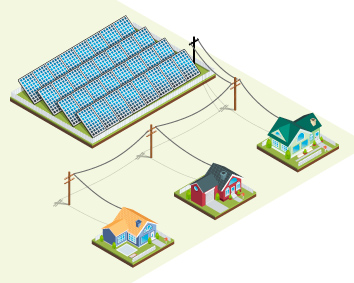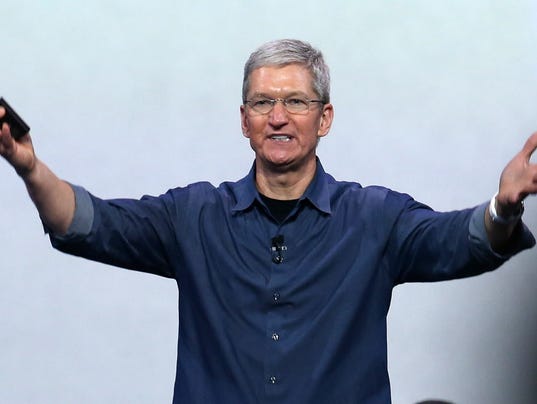Duke Energy: Ramping Up Its Solar Ambitions
Disclosure: The author is long SCTY. (More...)
Summary
- Duke Energy has acquired a majority stake in REC Solar, which should allow Duke Energy to stake a foothold in the promising distributed solar markets.
- Duke Energy and REC Solar make for an incredibly synergistic partnership, with Duke Energy providing for cheap capital and influence, and with REC Solar providing for its experience an talent.
- Because REC Solar's business directly conflicts with Duke Energy's centralized fossil fuels business, such an acquisition will only be worthwhile if distributed solar eventually becomes the dominant electricity generation model.
- Duke Energy is smart to expand its renewable energy profile, especially in light of solar's continually increasing cost-effectiveness and its exponential growth path.
The fight between utility companies and distributed solar companies have heated up markedly over the past year. Some major utilities have even started resorting to underhanded tactics, such as influencing congressmen to do their bidding. While most utilities are trying to quash distributed solar, the savvy utility companies are embracing the change. Duke Energy (NYSE:DUK) has been one of the rare few utilities that have actually seen the rise of distributed solar as a huge opportunity.
Duke Energy is currently the largest electricity holding company in the U.S., and has assets all over North and South America. While Duke Energy has a huge reliance on fossil fuels, which has been essential for the vast majority of the its business, the company is slowly making a transition to solar. Unlike most other utilities, Duke Energy is incorporating solar not as a means of meeting federal requirements, but to ensure the company's survival in a rapidly changing energy landscape. In fact, Duke Energy already has more renewable assets than many of the top renewable companies, with a sizable renewables portfolio consisting of around 1.8 GW worth of solar and wind assets. There are few other fossil fuel based utilities doing the same, with NRG Energy (NYSE:NRG) being almost the sole exception.
Duke Energy has reaffirmed its commitment to solar by acquiring a majority state in REC Solar, which focuses on distributed commercial installations. Duke Energy is willing to invest up to $225M into REC, with the clear intentions of trying to stake a foothold in the commercial solar sector. REC Solar will operate under Duke Energy Renewables(which is the green arm of Duke Energy) and should benefit tremendously from Duke Energy's financial clout and low costs of capital. As per Duke Energy CEO Allen Bucknam,
"We plan to extend the benefits of clean, distributed energy solutions to previously underserved small and medium-sized businesses," and that "The Duke Energy relationship realizes our strategy to be the one-stop shop for commercial solar by securing a predictable and streamlined customer financing process."
This is what a typical commercial REC Solar install looks like.
Source: REC Solar
The Importance of Maintaining an Early Foothold
The utilities sector has seen little to no change in over a century, which means that sudden industry change likely seems extremely threatening, and even alien to most utilities. This could explain why the majority of utilities have been violently opposed to the proliferation of distributed solar companies such as SolarCity (NASDAQ:SCTY). Instead of working with these companies, which would likely end up being better for everyone involved, most of these companies are fighting tooth and nail to resist change.
Duke Solar is clearly an anomaly in this sense, not only accepting such change, but actually transitioning its business model to become more solar friendly. The company's majority stake in REC Solar leaves no doubt about the company's renewable ambitions. Not only does REC Solar's business model come in direct conflict with that of Duke Energy's, but it also represents an existential threat to the company's centralized business model. Instead of combating such REC Solar, Duke Energy has gone the infinitely wiser route of acquiring it.
By controlling REC Solar's commercial solar operations, Duke Energy will have a foothold into the promising ditsributed solar sector. Because the vast majority of Duke Energy's business is based upon centralized fossil fuel generation, the acquisition of a distributed solar company seems counterproductive at best. That is, for every distributed solar customer that Duke Energy signs up, that is one less customer for its main centralized business. While this is a no-win situation for Duke Energy, the company is looking at the long-term energy landscape, where distributed generation may very likely replace centralized generation.
Without staking a foothold in the distributed solar sector now, Duke Energy may become obsolete later on. At the relatively small cost of $225M, Duke Energy is setting itself up for future success in an immensely promising market. While $225M is a sizable sum of money for the solar sector, it is merely pocket change for the $60B valuated Duke Energy.
Incredible Synergy
Duke Energy's acquisition of REC Solar should amount to some incredibly synergistic effects, especially in financial and political matters. Despite all the talk about distributed solar's coming dominance, this form of electricity generation currently only amounts to below 1% of total electricity generation, which unfortunately results in a lack of perceived credibility and influence. This is of course where Duke Energy can fill the void, and in return, Duke Energy gets REC Solar's talent and years of solar industry experience.
The distributed solar industry has traditionally suffered from high capital costs, largely due to solar PV's relatively novel technology. While solar PV has been around for 40+ years, the technology has not seen statistically significant adoption until the last decade or so. Because finance companies have had so little to work on in terms of accessing solar PV's stability/reliance, such high capital costs are not at all surprising.
REC Solar's capital costs have been no exception in this regard, which makes its Duke Energy partnership perfect for this situation. Duke Energy Renewables has billions on its balance sheet, which should drastically lower REC Solar's capital costs. Instead of trying to find outside funding for its commercial projects, REC Energy could now go directly to Duke Energy. A lowered cost of capital means that REC Energy would be able to increase its profit margins, expand its commercial operations, or both. This, of course, also benefits Duke Energy.
What makes Duke Energy's acquisition of REC Solar particularly intriguing is if/how Duke Energy will be able to leverage its financial clout to influence politics. For instance, the company's renewable arm has the majority of its solar assets in North Carolina, which unfortunately does not allow for solar leases/PPAs. While traditional distributed solar companies have nowhere near the political clout to significantly alter North Carolina's state policies/laws, Duke Energy has more than enough influence to do so(especially considering the fact that the company is based out of North Carolina). If Duke Energy chose to support the legalization of leases/PPAs in the state, REC Solar would benefit tremendously, which would in turn benefit Duke Energy.
With such a powerful utility heavyweight entering the distributed solar game, it will be interesting to see how Duke Energy deals with policies negatively impacting solar leasing/PPA. On one hand, these policies help Duke Energy's core business of centralized fossil fuel generation, but on the other hand, they would severely limit its distributed REC Solar business. Given Duke Energy's seemingly forward looking nature, it is likely that the company will aid in trying to eliminate such policies, at least in its home state of North Carolina.
Risks and Obstacles
As was previously stated, REC Energy's business comes in directly conflict with Duke Energy's main business of centralized generation. If distributed solar does end up dominating the electricity generation scene, this will prove to be an ingenious acquisition. If such a scenario does not play out though, REC Solar would likely just be taking revenue from Duke Energy's main business, resulting in a zero-sum game. This could even turn out to be negative-sum game considering all the time and effort that would likely be put into REC Solar.
In addition, REC Solar's business primarily deals with the distributed commercial sector, which has struggled to grow over the past few years. Duke Energy may have a harder time than anticipated in growing REC Solar's commercial business due to the numerous problems plaguing the commercial solar sector(i.e. lack of efficiency, standardization, etc). While such problems are possible to overcome, they will nevertheless represent daunting obstacles for Duke Energy's REC Solar acquisition.
Conclusion
Duke Energy is one of the largest energy companies in the world, having over 7 million customers in North America alone. Despite making its fortune on fossil fuels, the company is smart enough to realize that centralized fossil fuel dominance will not last forever. The company's transition into renewables, and more importantly, distributed solar, will prove to be key for the company's future success. With a valuataion of $60B and a P/E ratio of 19, the company still has upside due to its increasing involvement in the immensely promising solar market.











